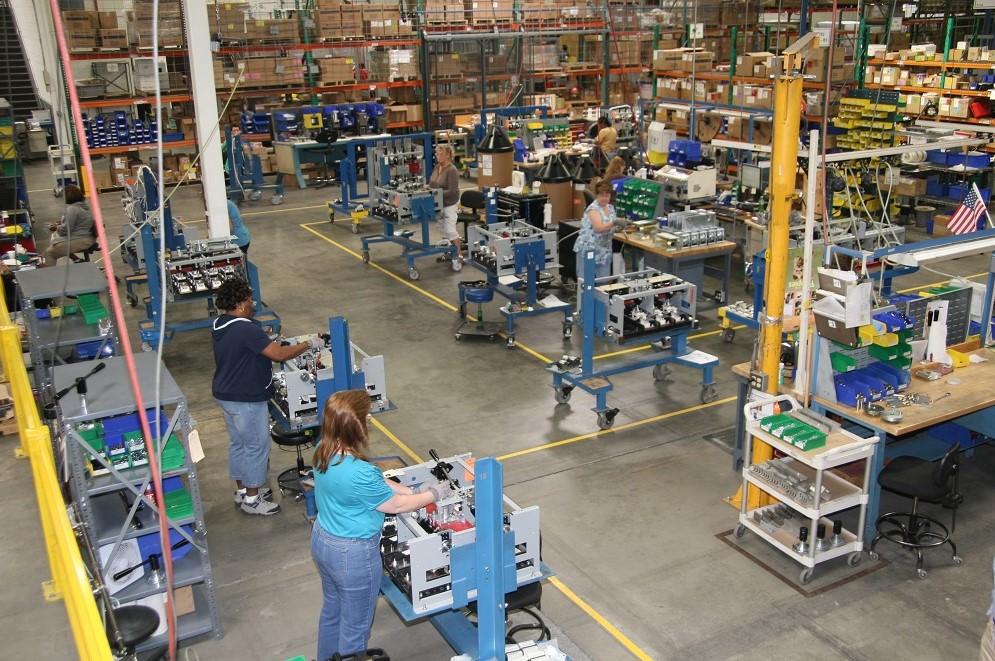- FMA
- The Fabricator
- FABTECH
- Canadian Metalworking
Categories
- Additive Manufacturing
- Aluminum Welding
- Arc Welding
- Assembly and Joining
- Automation and Robotics
- Bending and Forming
- Consumables
- Cutting and Weld Prep
- Electric Vehicles
- En Español
- Finishing
- Hydroforming
- Laser Cutting
- Laser Welding
- Machining
- Manufacturing Software
- Materials Handling
- Metals/Materials
- Oxyfuel Cutting
- Plasma Cutting
- Power Tools
- Punching and Other Holemaking
- Roll Forming
- Safety
- Sawing
- Shearing
- Shop Management
- Testing and Measuring
- Tube and Pipe Fabrication
- Tube and Pipe Production
- Waterjet Cutting
Industry Directory
Webcasts
Podcasts
FAB 40
Advertise
Subscribe
Account Login
Search
Standardized nesting integrated with MES helps manufacturer achieve data-driven efficiency improvements
- March 3, 2021
- News Release
- Manufacturing Software
Situation
ASCO Power Technologies, based in Welcome, N.C., manufactures automatic transfer switches, switchgear, and other power management products. Back in 1997 the company was facing challenges with nesting programs on its fabrication machines.
“We used a range of nesting software systems supplied alongside machines at the time, with varying issues,” recalled James Hunley, fabrication specialist. “One was slow and not user-friendly—more of a CAD system than software designed for punching. Functions such as batch nesting were very cumbersome. We moved to another system, which resolved some of the issues of its predecessor but brought its own problems. Making changes often required you to start over—not convenient when you’d just spent 20 minutes tooling a part.”
In addition, having multiple nesting systems, each driving specific machines, was a problem because staff were less knowledgeable on some systems than others—a particular challenge when anyone took vacation or sick time. And retooling jobs for other machines often meant going back to DXF and starting again.
"One system was unreliable at applying tooling if the part was not created perfectly in CAD. This meant that we’d have to go back to the engineering department to get changes made to the CAD file before trying again," Hunley explained.
Resolution
The company received Jetcam Expert nesting software alongside a Finn-Power 880 CNC punch press. After using it with other systems, Hunley realized it was outperforming them in every way. He, along with Steve Gandy (manufacturing technician) and Susan Krohn (IT) sought to expand on this.
The decision was made around 2005 to standardize on Expert for all new machines. Benchmark comparisons over the years have shown programming to be up to 75% quicker, and nesting efficiency as much as 14% better.
In addition to having new machines running with the software, Hunley set about replacing the remaining nesting systems, talking with Jetcam U.S. distributor NestOne Solutions about postprocessors.
“After we initially got Jetcam, we quickly identified that we were seeing bottlenecks on other machines. When we purchased posts for other machines, such as our Wiedemann, we were able to move work over to it in a matter of hours, whereas previously it would take three days.”
In 2014 ASCO upgraded its standard free-form nesting to Jetcam’s Free Form High Performance Nesting module, which resulted in another 4% material savings.
Continually looking for areas of improvement, the company identified that scheduled, fully dynamic nesting across all its machines would deliver further benefits. In 2017, after reviewing numerous manufacturing execution systems, ASCO chose Aquila DMM because of its tight integration with Jetcam Expert, giving operators the ability to request nests on demand.
"Previously, operators might cherry-pick easier nests,” Hunley explained. “Now we are driven by data. DMM knows what parts to make and the next machine available, so it will send the parts for dynamic nesting to Jetcam, with NC code then quickly being ready. This ensures that the machines are always busy.”
Real-world scenarios also can be managed, with complex parts such as louvers handled using static nests. Hunley added: “DMM allows us to work outside of the automated processes if we need to. It sees the order and knows that this requires an existing static Jetcam nest instead of a new dynamic one. Fully automating the nesting process freed up one person’s job by 95%—now he just programs parts and oversees the DMM schedules.”
subscribe now

The Fabricator is North America's leading magazine for the metal forming and fabricating industry. The magazine delivers the news, technical articles, and case histories that enable fabricators to do their jobs more efficiently. The Fabricator has served the industry since 1970.
start your free subscription- Stay connected from anywhere

Easily access valuable industry resources now with full access to the digital edition of The Fabricator.

Easily access valuable industry resources now with full access to the digital edition of The Welder.

Easily access valuable industry resources now with full access to the digital edition of The Tube and Pipe Journal.
- Podcasting
- Podcast:
- The Fabricator Podcast
- Published:
- 04/16/2024
- Running Time:
- 63:29
In this episode of The Fabricator Podcast, Caleb Chamberlain, co-founder and CEO of OSH Cut, discusses his company’s...
- Industry Events
16th Annual Safety Conference
- April 30 - May 1, 2024
- Elgin,
Pipe and Tube Conference
- May 21 - 22, 2024
- Omaha, NE
World-Class Roll Forming Workshop
- June 5 - 6, 2024
- Louisville, KY
Advanced Laser Application Workshop
- June 25 - 27, 2024
- Novi, MI































